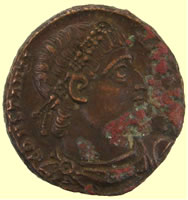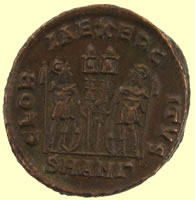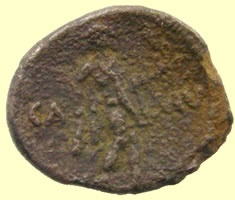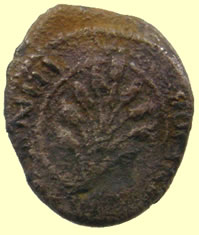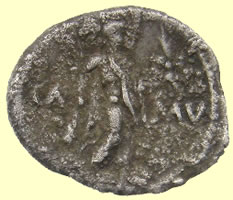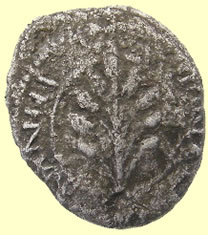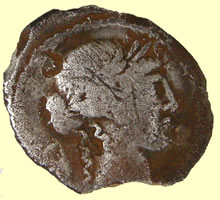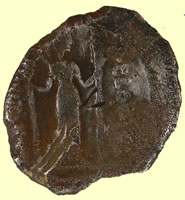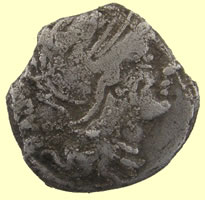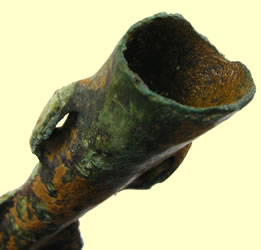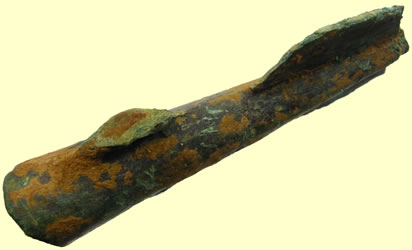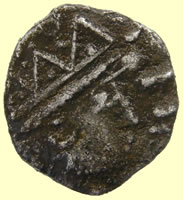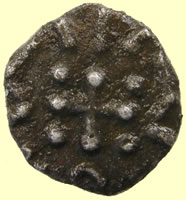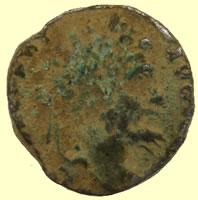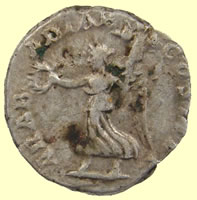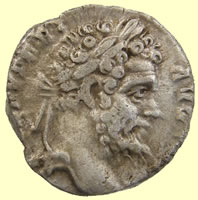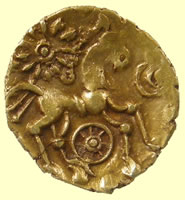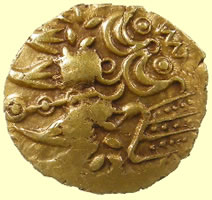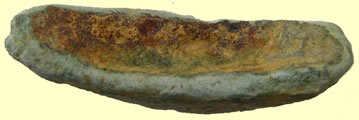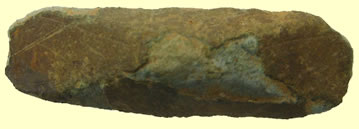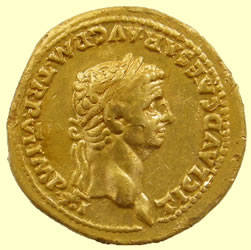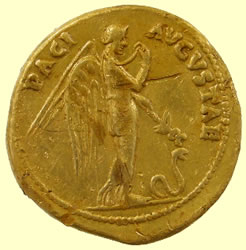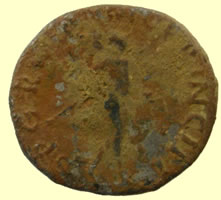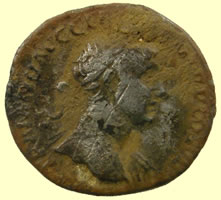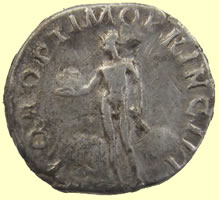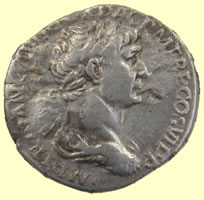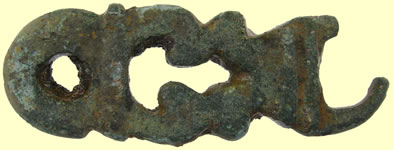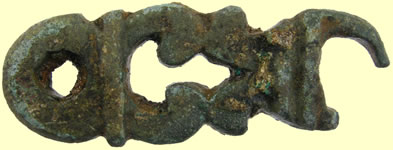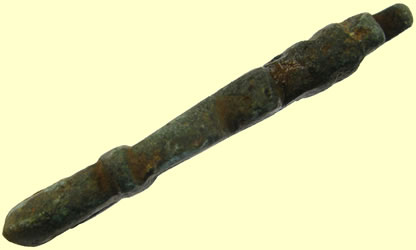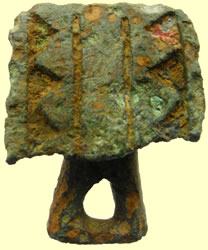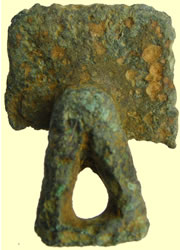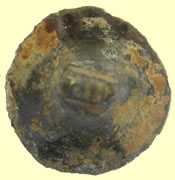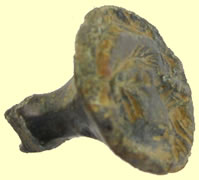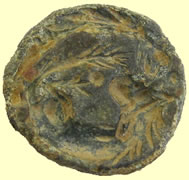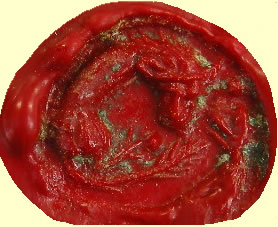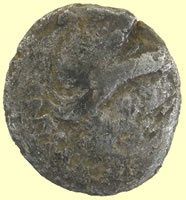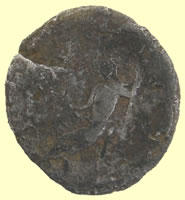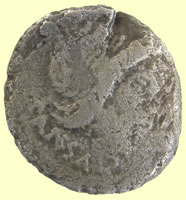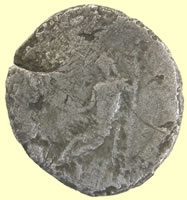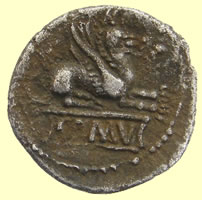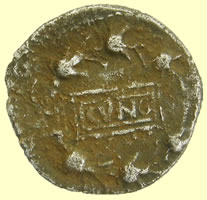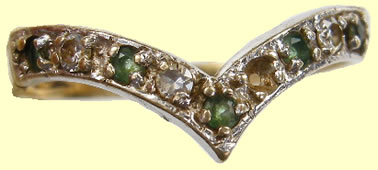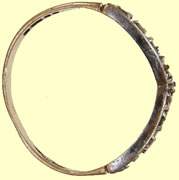

Metal detecting holidays in England with the World's most successful metal detecting club.
Twinned with Midwest Historical Research Society USA
2011 March II finds page |
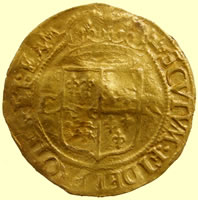 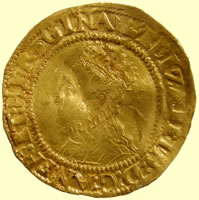 |
||||||||||
1567-70 Elizabeth 1st hammered gold crown (60 pence) - Coronet mintmark 2.80g, 22.12 |
||||||||||
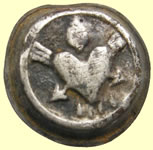 |
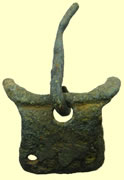 |
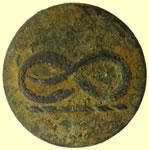 |
||||||||
17thC Charles II silver button - reported as treasure to museum |
Medieval buckle |
19thC snake livery button |
||||||||
 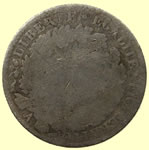 |
  |
|||||||||
French silver Franc coin |
1929 George V milled silver sixpence |
|||||||||
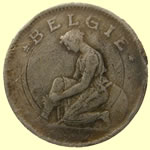 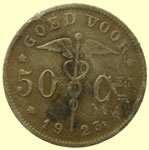 |
 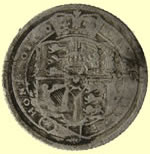 |
|||||||||
1923 Belgium 50 C silver coin |
1818 George III milled silver sixpence |
|||||||||
 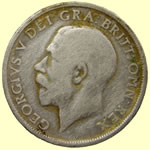 |
 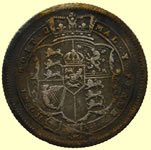 |
|||||||||
1920 George V milled silver sixpence |
1816 George III milled silver sixpence |
|||||||||
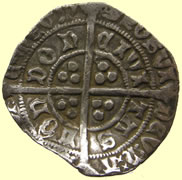 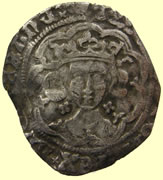 |
||||||||||
1464-1470 Edward VI Light issue hammered silver half groat - Satire stops, satires by neck. Obv EDWARD DI GRA REX ANGL FRANC Rev CIVI/TAS/LON/DON - London mint |
||||||||||
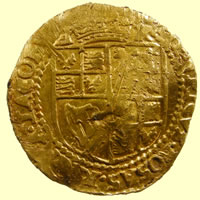 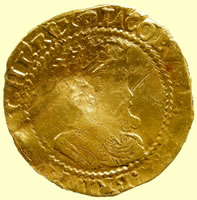 |
||||||||||
1615-16 James 1st hammered silver Britain crown - Tun mintmark 2.46g, 20.03mm |
||||||||||
17.45mm,3.05g |
||||||||||
Gobsmacking Roman coin dug - When I saw this last night I was staggered to see a coin come out of the ground in this condition. Cal Dan wandered onto a uncultivated grass spot on a great Roman area and popped it. I suspected one of 3 things, he made it himself, he clipped the top off a pot or it had a hugh gold content. I dropped Mark an email asking the same questions and the reply is facinating. What a magnificient Roman coin, stunning. The guys are going to give this grass we never hunt a good pounding shortly to check if there are more out there. It might contain one or two percent silver, at best. Nothing like a soldiers and standards GLORIA EXERCITVS was ever struck in gold. Also, even as horribly as they debased first the silver, and later even the bronze was adulterated with lead and even iron scraps, some peices were struck in "virgin bronze" of pure copper & tin with a tiny admixure of silver. Try a strong magnet on some LRB's sometime - you may be surprised how many of them will respond in some observable way to a magnet, indicating a significant iron content.
As beautiful as this piece is compared to what you usually see coming out of the ground, this is just an example of 1st, the mint hitting its quality-control goals - the Romans conceived of an "ideal coin" which would be a regular, thin cylindrical section disc, perfectly struck and centered on-flan. As you know, it very seldom worked out that way. They almost never achieved their own ideal.
This is also what happens when a coin quickly develops a thin layer of oxidate which "seals" it from most further degradation. I say most because as you can see from the obverse, there are some smallish areas which experienced some further oxidation. This coin was also well-struck and centered perfectly on a nearly perfect cylindrical-section disc-shaped flan. The dies were newly cut so all the detail the engraver intended was still present on the dies to be represented on the coin.
This is the difference between a coin which a high-end sales venue gets, well, I don't even know, but I've heard of some very attractive common LRB's bringing as much as US $100 lately - and another, completely authentic and ancient coin of the exact same type - perhaps struck with the same dies - but weakly struck, off-center and at an angle of some degrees off parallel planes, on a raggedy, debased flan with who-knows-what junk in the alloy. It's "Friday afternoon", eveyone's tired, the dies are worn out, but you're not going to break-out a new set of dies this late in the day, and the quality goes way down - you find those coins in a $1 apiece pick-box at a flea market.
Occasionally, they really got it right - and those specimens are the exception rather than the rule.
Also, your coin, like the 2nd coin above, is a product of the mint at Antioch, which for some reason or in some manner always seemed to turn out a superior product compared to the Balkan & southern European mints, etc.
Mark
PS - Your coin is Constantine I, "the great", mint of Antioch, RIC VII 85, 330-335 AD.
|
||||||||||
2ndC Roman tweezers |
||||||||||
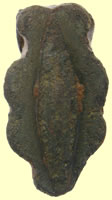 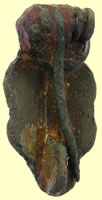  |
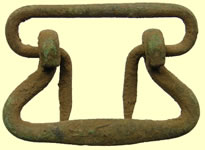 |
|||||||||
Fantastic complete 2ndC Roman plate brooch |
19thC buckle |
|||||||||
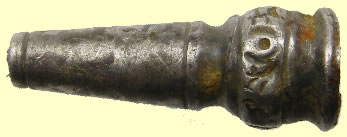 |
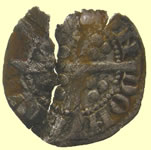 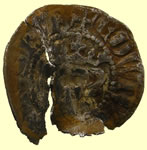 |
|||||||||
Interesting Victorian silver piece- ? |
1272 Edward 1st hammered silver penny - Cross potent - 1d to 9c Obv EDWAR **** Rev CIVI/TAS/LON/DON - London mint
|
|||||||||
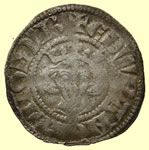 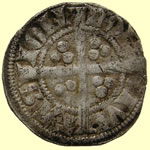 |
  |
|||||||||
1341 Edward III hammered silver penny florin penny Obv EDWR ANGL DNS HYB Rev CIVI/TAS/LON/DON - London mint |
Huge As sized Roman bronze coin - sent for ID That is definitely Marcus Aurelius - 161-180 AD. The piece is a little too worn to get an accurate date from it - the reverse type is reduced to "generic" personification: female, facing left, raising right hand and/or holding something in it, and either resting on a scepter or holding a cornucopiae, etc. Could be any of 20 or 30 stock personifications of abstract concepts.
If there were enough detail left in the obverse legend for it to be deciphered, it would probably contain a TR P or Consular date which would allow us to narrow-down the time-frame to a year or two, but that is an "older" bust of Aurelius, when he had let his "Philosopher's Beard" grow, and was being portrayed on coins with it long and scraggly.
My guess is that it's no earlier than 170 AD - and could be as late as 180.
Mark
|
|||||||||
 |
 |
|||||||||
Monster sized cow bell next to a normal crotal for size |
1930's children book printing plate |
|||||||||
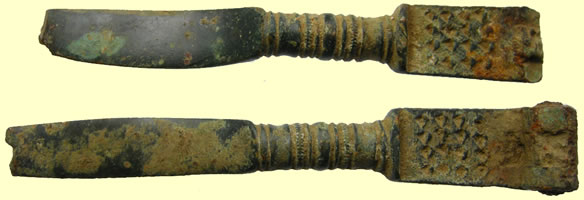 |
  |
|||||||||
Georgian nut crackers |
1215 Henry III hammered silver cut 1/4 penny |
|||||||||
 |
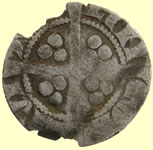  |
|||||||||
Nice toy lead piggy |
1341 Edward III hammered silver penny florin penny Obv EDWR ANGL DNS HYB Rev CIVI/TAS/LON/DON - London mint |
|||||||||
 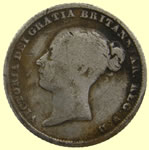 |
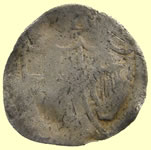  |
|||||||||
1839 Victoria milled silver sixpence |
1649 Commonwealth hammered silver half groat |
|||||||||
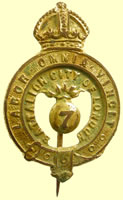 |
 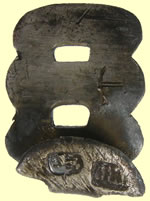 |
|||||||||
7th City of London Regiment badge The London Regiment was formed on 1st April 1908 when the old Volunteer battalions became part of the new Territorial Force. In the majority of cases the new Territorial battalions were linked to a regiment of the regular army but the London Regiment was unique in that it contained no regular battalions. The battalion was known as 'The Shiny Seventh'. Their drill hall was at Finsbury Square The 1/7th landed in France in March 1915. |
18thC silver clog fastener - Maker MT |
|||||||||
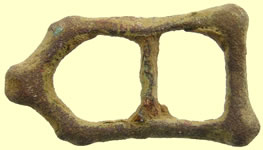 |
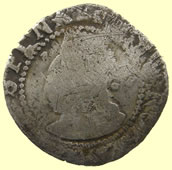  |
|||||||||
Late Medieval buckle |
1569-71 Elizabeth 1st hammered silver half groat |
|||||||||
  |
 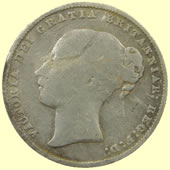 |
|||||||||
1247 Henry III hammered silver voided long cross half penny - Class IIB Rev IAC/OBO/NNO/RWI - Moneyer Jacob of Norwich mint |
1865 Victoria milled silver shilling |
|||||||||
  |
 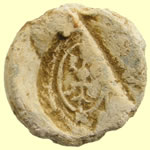 |
|||||||||
Medieval gilded hanging penant |
17thC Continental lead bale seal |
|||||||||
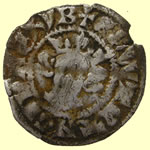 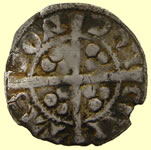 |
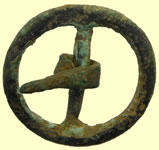 |
 |
||||||||
1341 Edward III hammered silver penny florin penny Obv EDWR ANGL DNS HYB Rev CIVI/TAS/LON/DON - London mint |
Medieval annualar buckle |
Saxon key |
||||||||
Monster find 10-40AD Celtic Cunobelin tribe silver coin - in the 'cooker' to remove crust 13.98mm, 1.17g rev figure stg.r.,partially draped, holding club in r.hand & palm branch in 1.,to 1.'CA',to r 'MV',pellet border Obv .leaf c inside circle,to r.'CVNOB',to 1.'[ELI]NVS', pellet boarder Similar Hobbs 1897 |
||||||||||
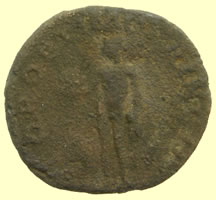 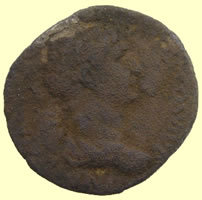 |
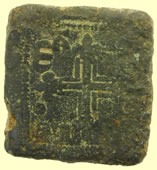 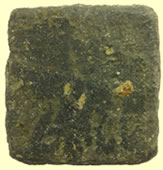 |
|||||||||
Silver Roman coin - straight into the cooker to remove crust |
Unknown medieval coin weight |
|||||||||
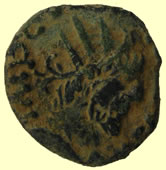 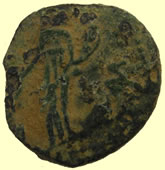 |
 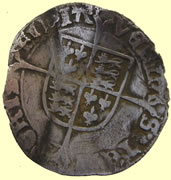 |
|||||||||
Mid 4thC Barbarous radiate Roman bronze coin - sent for ID |
1554 Mary hammered silver groat (4 pence) |
|||||||||
  |
 |
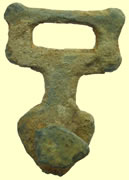 |
||||||||
WWII Army watch |
Geoger rex Army button |
17thC hooked strap end |
||||||||
  |
 |
|||||||||
1603 James 1st hammered silver half groat |
Georgian silver handle |
|||||||||
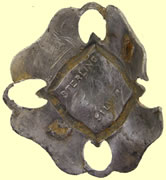 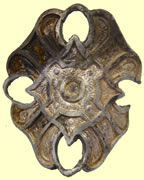 |
 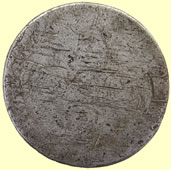 |
|||||||||
Victorian silver brooch |
1696 William III milled silver sixpence |
|||||||||
 |
 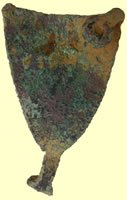 |
|||||||||
17thC key |
Medieval heraldic shield mount |
|||||||||
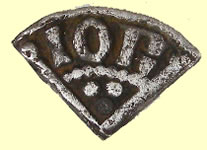 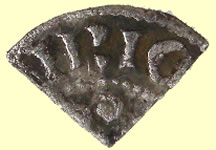 |
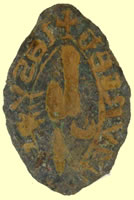 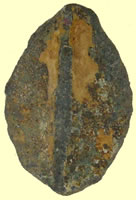 |
|||||||||
1247 Henry III hammered silver voided long cross qtr penny Rev IOR/ - Moneyer JORDAN of winchester mint |
13thC Vessica seal matrix |
|||||||||
  |
|
|||||||||
1215 Henry III hammered silver shortcross cut half |
BC Roman Republican silver sent for ID You have an AR Denarius of P. Clodius M. f. Turrinus, c. 46 BC.
Obv: Laureate head of Apollo right, lyre behind.
Rx: Diana Lucina standing right holding long, lighted torch in each hand, P . CLODIVS on right, M • F on left.
Syd. CRR 1117, RSC/Babelon Clodia 15, SR 492.
Mark
|
|||||||||
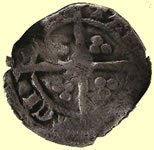 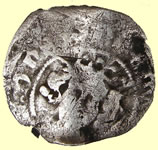 |
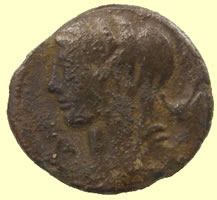 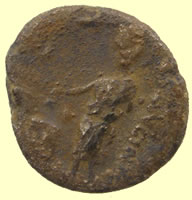 |
|||||||||
1279 Edward 1st hammered silver penny Rev CIVI/TAS/EBO/RACI - York mint |
BC Roman Republican silver sent for ID This one is L Cassius Longinus, 63 BC.
Obv: Veiled and diademed head of Vesta left, 2-handled cup behind, control letter before.
Rx:Togate citicizen standing left depositing ballot inscribed, V (Uti Rogas) in voting box; LONGIN III V behind.
CRR 935, RSC/Babelon Cassia 10, SR 364.
Mark
|
|||||||||
|
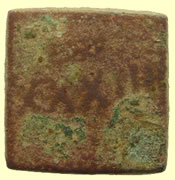 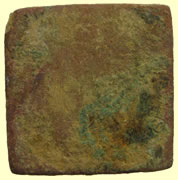 |
|||||||||
BC Roman Republican silver sent for ID This one may be a bit more challenging - but let's see how it cleans up before I give up. The issue is that the design is a great deal more "generic" than the last few - I will need to be able to read whatever lettering may be visible to tell this from the gazillion other "quadriga right" republicans.
I believe you have the photo of the obverse out of alignment about 90º to clockwise.
Mark
This one took a bit of digging, but it appears to be a denarius of L. Sentius C. f., 101 BC. Behind the helmeted head of Roma, it's inscribed ARG PVB - short for EX ARGENTO PVBLICO - or made from public silver. Since all denarii were in fact coined from metal in the State bullion reserve at the time, no one is too sure why a few coins of ths era state the obvious. It was around the time of the ascendency of Gaius Marius, though, and a lot of things were "different" at the time.
On the reverse is Jupiter driving a quadriga, holding a scepter and thunderbolt. Beneath that, if there were more of the coin surviving, you would be able to read L • SENTI • C • F.
The reference is RSC/Babelon Sentia 1a, SR 203.
Mark
|
Monster gold coin - 1603 James 1st Rose Ryal coin weight - 33 shillings (390 pence) Obv XXXII |
|||||||||
  |
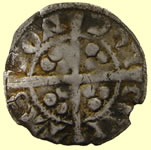 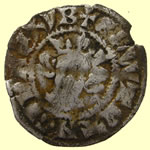 |
|||||||||
1165 -1214 William 1st The Lion Scottish hammered silver half penny Money Walter Adam - Edinburgh |
1341 Edward III hammered silver florin penny Obv EDWAR ANGL DNS HYB Rev CIVI/TAS/LON/DON - London mint
|
|||||||||
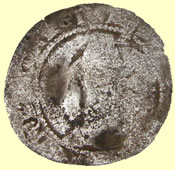 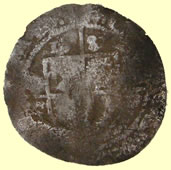 |
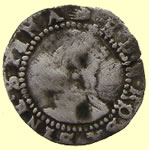 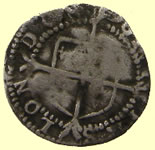 |
|||||||||
1582 Elizabeth 1st hammered silver half groat |
1590 -6 Elizabeth 1st hammered silver penny |
|||||||||
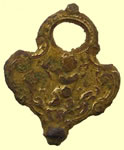 |
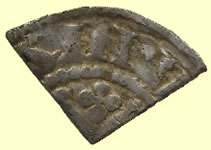 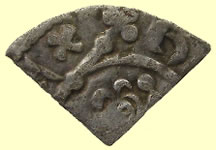 |
|||||||||
Georgian watch winder |
1215 Henry III hammered silver shortcorss cut 1/4 penny Bury St Edmunds mint |
|||||||||
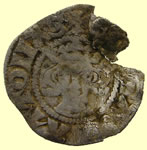 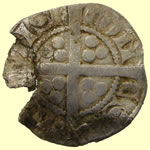 |
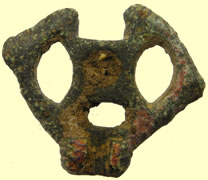 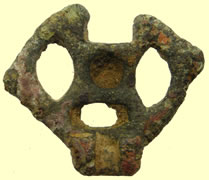 |
|||||||||
Blundered legend suggest Medieval silver penny, continental imitation of sterling type known as a 'Lusshebournes' circa 1280. Mainly from the low countries of Europe Obv +E****SA**ATTONAS Rev *ISI/CON/CS |
Saxon stirrup top mount |
|||||||||
 |
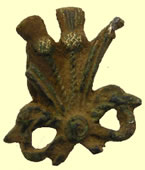 |
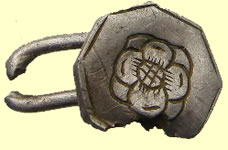 |
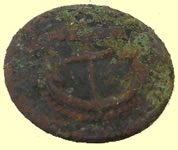 |
|||||||
Essex county button |
Thistle badge |
18thC Royal Navy button |
Very interesting Navy button with rope at bottom of anchor - not one I know |
|||||||
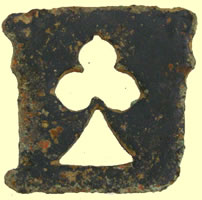 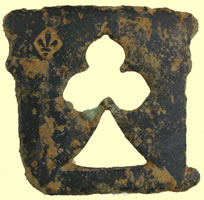 |
 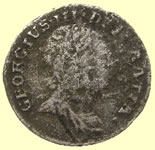 |
|||||||||
Very intresting medieval piece with Fleur de Lis foundary mark. Possible scabbard top plate for a dagger ? one for the museum |
1784 George III milled silver penny |
|||||||||
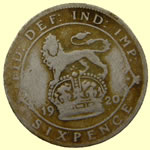  |
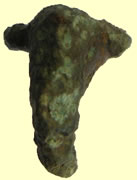 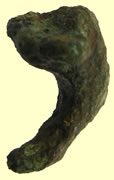 |
|||||||||
1920 George V milled silver sixpence |
2ndC Roman fibular brooch |
|||||||||
 |
 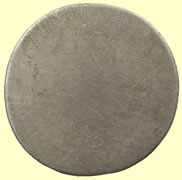 |
|||||||||
Roman buckle tongue |
1704 Anne milled silver sixpence |
|||||||||
  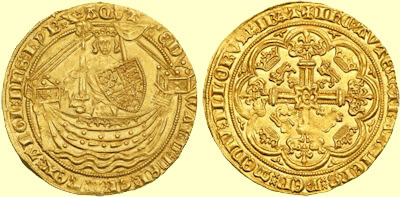 |
||||||||||
Monster sized fragment of a Circa 1327 AD Medieval hammered full gold Noble- ship reverse
23.63mm ,1.47g |
||||||||||
Middle Bronze age socket spear head 1500-1100 BC 85.26mm L x 25.57mm W - socketed dia 18.88 mm |
||||||||||
|
||||||||||
Saxon C600-775 AD Silver Sceat - sent to Fitzwilliam museum for recording and ID 1.23g, 12.22mm Many thanks. This is EMC 2011.006. |
||||||||||
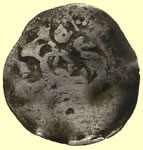 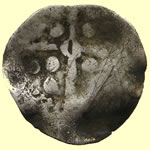 |
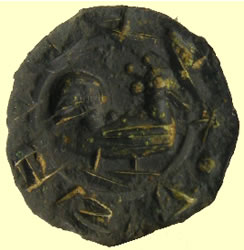 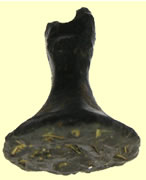 |
|||||||||
Medieval hammered silver penny |
Medieval seal matrix - Cockerel impression |
|||||||||
|
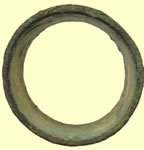 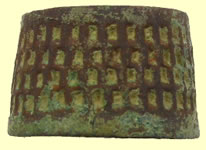 |
|||||||||
Roman silver coin into the 'cooker' to remove crust - sent for provisional ID I don't know if you've gotten this piece cleaned any better than the original photos showed, but in a slow moment, I enlarged the photos and compared what I could see with some common types for Septimius Severus, and I think I can now tell what it is based on the ghost of a reverse type and the fragments of lettering which show through the crust and around the edges.
I think the oberse legend is going to turn out to be: L SEPT SEV PERT AVG IMP VIII - and the reverse will be ARAB ADIAB COS II P P. Victory advancing left holding wreath and trophy. This type commemorates victories wonv in the far east, against Parthia, et als.
All the letter-seriphs that are visible on both sides seem to line up with these legends. If I'm correct, it dates to 196 AD.
I'll still be curious to see what you come up with after you cook it a bit.
Mark
|
15thC open topped thimble |
|||||||||
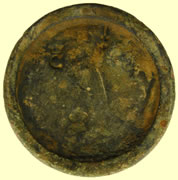 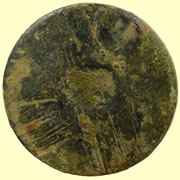 |
 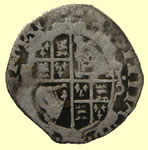 |
|||||||||
17thC Charles 1st trade weight - Crown C cipher |
1634 Charles 1st hammered silver penny |
|||||||||
 |
||||||||||
Large 11000 BC Stone age flint scraper
|
||||||||||
 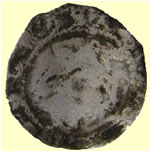 |
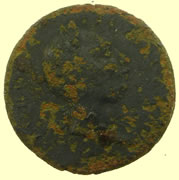 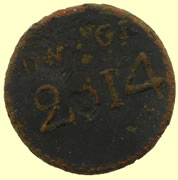 |
|||||||||
1600 Elizabeth hammered silver penny - O mint mark |
1760-1820 George III - 2 penny weight and 6 grains coin weight |
|||||||||
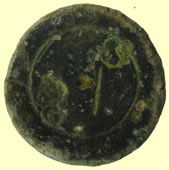 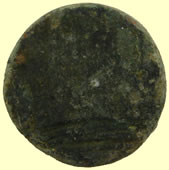 |
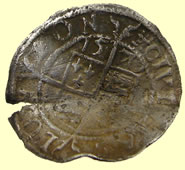 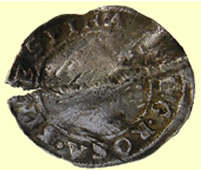 |
|||||||||
Georgian trade weight - Crown G cipher |
1570 Elizabeth hammerted silver half groat |
|||||||||
 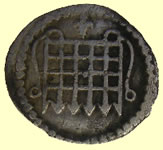 |
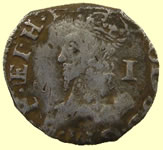 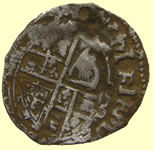 |
|||||||||
1604-5 James 1st hammered silver halfpenny |
1634 Charles 1st hammered silver penny |
|||||||||
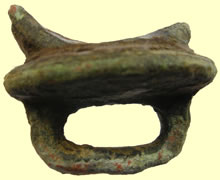 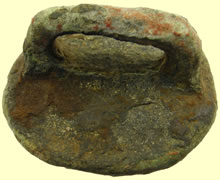 |
||||||||||
2ndC Roman harness protected loop terret
|
||||||||||
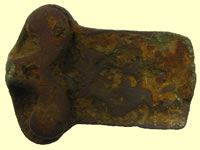 |
 |
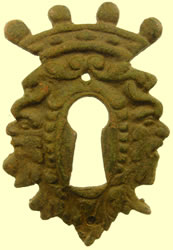 |
||||||||
18thC clog fastner |
16thC Tudor button |
Really neat Georgian key hole surround |
||||||||
  |
  |
|||||||||
1215 Henry III hammered silver cut half penny |
1946 George V milled silver sixpence |
|||||||||
  |
 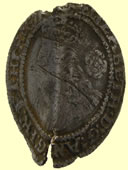 |
|||||||||
Very interesting medieval pendant - could be treasure if base metal is silver |
1570 Elizabeth hammered silver half groat |
|||||||||
  |
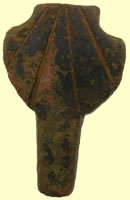 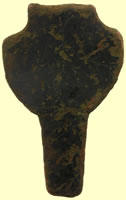 |
|||||||||
Not sure what this is - one for the museum |
Not sure what this is - one for the museum |
|||||||||
 |
||||||||||
Early 70BC uninscribed 'Q' Gold - 'Remi 'Type Celtic gold qtr stater Rev .horse r.,from neck pellet ring var.d above pellet in ring,flower j & pellet-in-ring,before 4 pellet-in-rings,below wheel f & pellet, below & above tail pellet-in-ring triangle 1.34g,14.86mm Hobbs 482 |
||||||||||
|
||||||||||
1stC BC to 1stC AD Celtic cosmetic wode grinder |
||||||||||
  |
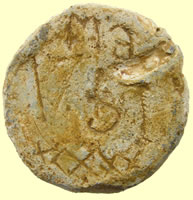 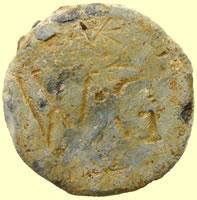 |
|||||||||
Superb dated 1751 lead trade weight - inscribed WG on obv |
||||||||||
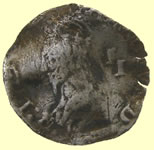 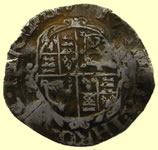 |
 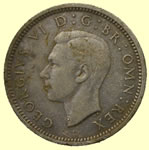 |
|||||||||
1634 Charles 1st hammered silver half groat |
1938 George V milled silver sixpence |
|||||||||
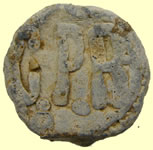 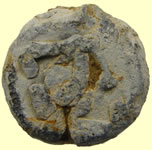 |
  |
|||||||||
Post medieval lead bale seal |
1634 Charles 1st hammered copper rose farthing |
|||||||||
Roman gold coin - sent for ID 19.6mm, 7.81g Oh man, is that ever beautiful!
That is, of course, an Aureus of the emperor Claudius (41-54 AD) the presumed-to-be "simple-minded", somewhat disabled uncle of Caligula. He was seized upon by the Praetrorian guard as a tractible replacement after they had murdered Caligula, his wife and child. It turned out that Claudius was smarter than most of the Julio-Claudians and had merely allowed everyone to think he was simple-minded. This allowed him to hide in the background, out of the way of the endless palace intrigues. The successful ruse evidently kept him from suffering the sort of "mysterious" death which seemed to stalk all the other Julio-Claudians who might be in-line for or have some claim to being emperor. Once in power, he showed that far from being "simple", he was a shrewd and canny politician and proved to be a benificent ruler as well, righting a lot of the wrongs perpetrated by his evil nephew. Eventually, however, his love of women was his downfall. Marrying his neice, Agrippina Jr., the last of his succession of unfortunate marriages, he had inadvertantly adopted and brought into his home one of the true vipers in the Imperial nest, her son, the future emperor Nero. It is assumed that Agrippina, on her son's behalf, (or possibly even Nero himself) was responsible for feeding him a dish of deadly poisonous mushrooms. This removed the last impediment and cleared the way for Nero to become emperor.
This is one of the more common reverse types for Claudius' aureii, the PACI AVGVSTAE or "The Emperor's Peace". It has an interesting reverse type, too. Rather than Victory, whom you might assume was the winged character on the reverse, this is "Pax-Nemesis" performing a gesture associated with a uniquely Roman bit of superstition. She is drawing out a fold of her gown in what is called in some delicate circles an "Apotropaic gesture" - in other words, she's spitting on her own breast, which, like throwing a pinch of spilled salt over one's shoulder or touching wood, was a common superstitous custom among Romans and meant to deflect bad fortune.
This piece was struck in 41-42 AD at the imperial mint for precious metal coins, which happened at the time to be in the provincial capital at Lugdunum (modern Lyons) and coincidentally was also where the future emperor Claudius had been born.
This is actually one of the more common types of early Roman Imperial Aureii, but "common" here is all relative - particuarly in recent months, Roman Aureii have been bringing astonishing amounts of money - I wouldn't even venture a guess as to what the current market value of this piece might be - most likely at least in the 5-figures range of GBP's, Euros or Dollars.
Mark
|
||||||||||
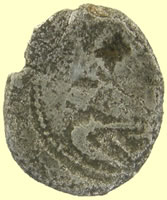 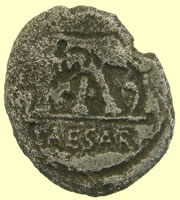 |
||||||||||
BC Roman Republican silver sent for ID Oh yes, I know what this is - and you really should too. It's not "Republican" per-se, but it is BC and what's called "Imperatorial" - from the period between the downfall of the earlier Roman governmental system and the eventual rise of the Principiate. This piece was issued by Julius Caesar, himself. It's about the most common of the Julius Caesar pieces showing an elephant trapling either a serpent or possibly a "Srinx" which was a Gaulish battle horn. The reverse has a display of the typical Roman priestly impedimentia, ladle, sprinkler, axe and apex (priest's hat), etc.
This type dates to about 49 BC and was issued "in the field" during the time when Caesar invaded northern Italy from over the alps, a successful move in his process of driving Pompey's army out of Rome and into refuge in Greece.
Mark
|
||||||||||
As dug and cooked 1stC Roman silver coin sent for the ID
This is a denarius of Trajan - (did you show me this one in as-dug condition?) and there's enough clean detail now to tell you that it's "Genius" (the inspirational spirit of the Roman People, not necessarily "genius" as in Einstein) holding a patera - which is sort of a saucer-like affair from which ritual libations were poured - and a bunch of corn-ears. Although the legends are different, the types are all the same as on this piece:
It's from the mint at Rome and dates to around 107 AD, or right in the middle of Trajan's reign.
Mark
|
||||||||||
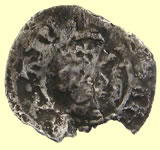 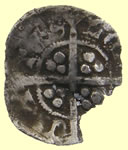 |
 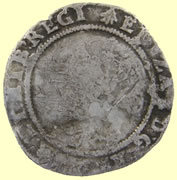 |
|||||||||
Circa 13thC Henry hammered silver farthing Obv HENRICVS REX ANG ** Rev CIVI/TAS/LON/DON - London mint |
1585 Elizabeth 1st hammered silver sixpence |
|||||||||
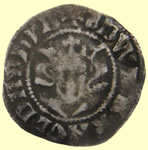 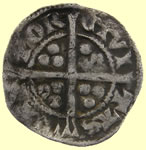 |
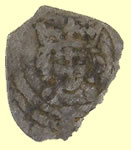 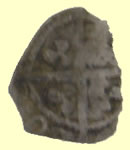 |
|||||||||
1341 Edward III hammered silver penny florin penny Obv EDWAR ANGL DNS HYB Rev CIVI/TAS/CAN/TOR - Canterbury mint |
Medieval hammered silver farthing |
|||||||||
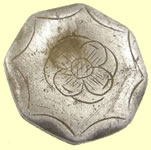 |
 |
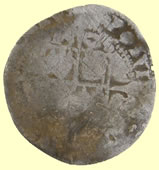 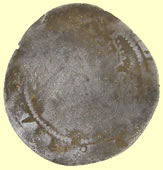 |
||||||||
18thC silver button |
18thC toy cannon |
1595 Elizabeth 1st hammered silver half groat |
||||||||
 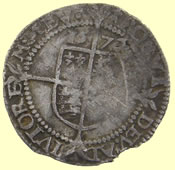 |
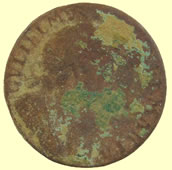 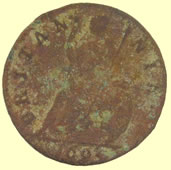 |
|||||||||
1572 Elizabeth 1st hammered silver half groat |
1695 William & Mary copper farthing |
|||||||||
|
||||||||||
Huge chunk of ornate cast Roman bronze - possibly swivel harness stap fitting - one for the museum |
||||||||||
  |
||||||||||
1100 BC Bronze age spear point |
||||||||||
Missing part of the Stunning 1stC BC to 1stC AD Iron Age Celtic enameled clothing fastener found last week |
||||||||||
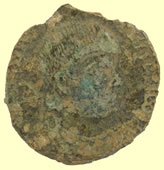 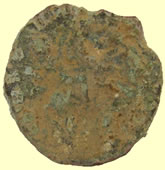 |
||||||||||
4thC House of Constantine Roman bronze coin |
||||||||||
  |
||||||||||
Stunning 1871 Victorian gold full sovereign - George and the dragon reverse 8.04g,22.06mm |
||||||||||
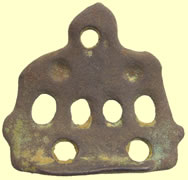  |
  |
|||||||||
C10thC Saxon stirrup mount |
17thC clock hand |
|||||||||
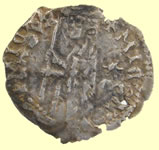 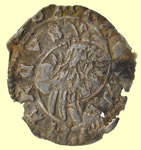 |
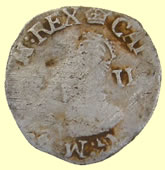 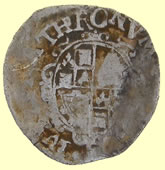 |
|||||||||
Venetian Soldino issued by Doge Michele Steno (1400-1413). Doge standing left, holding banner, * / D in right field |
1635-6 Charles 1st hammered silver half groat |
|||||||||
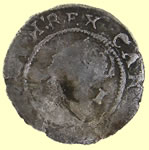 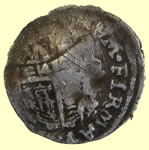 |
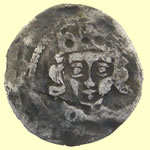 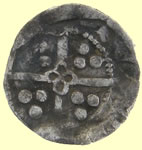 |
|||||||||
1634 Charles 1st hammered silver penny |
1461 Edward IV Irish hammered silver penny |
|||||||||
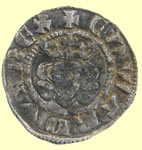 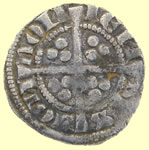 |
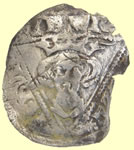 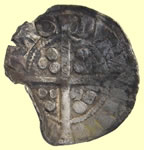 |
|||||||||
1279 Edward 1st hamered silver farthing - Large flan inner circles both sides - Type 1 Obv EDWARDVS REX Rev LON/DON/IEN//SIS - London mint |
1279 Irish Edward 1st hammered silver penny - Dublin mint |
|||||||||
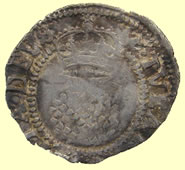 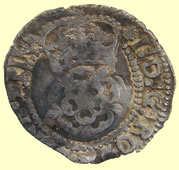 |
 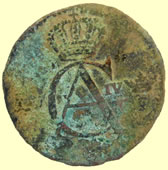 |
|||||||||
1606-7 James 1st hammered silver half groat |
1803 Swedish Gustaf IV Adolf copper 1/4 skilling |
|||||||||
  |
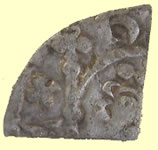 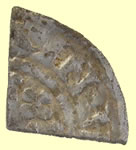 |
|||||||||
1215 Henry III hammered silver short cross cut halfpenny Obv HENRICVS REX Rev IObAN.O ** - Moneyer Iohan |
1215 Henry III hammered silver short cross cut 1/4 penny |
|||||||||
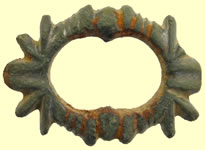 |
 |
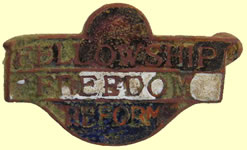 |
||||||||
1500-1650 buckle |
18thC toy cannon |
Fellowship, Freedom, Reform badge The Fellowship of Freedom & Reform, temperance movement badge (1920's-1940's)The Fellowship of Freedom & Reform (FFR) were a temperance-based movement who campaigned for more responsible trading within licensing premises. Unlike other temperance organisations, the FFR had no religious affiliations nor seeked a ban on the sale of alcohol. Rather, they campaigned to reform and fight against abuses within the licensed trade and for improved family-orientated public houses. The FFR also published their own periodical called Sobriety. The badge is made from die-stamped brass with three enamels (blue, red & white) and a gilt finish.
|
||||||||
Human face on a rat's body impression? |
||||||||||
13thC Medieval seal matrix |
||||||||||
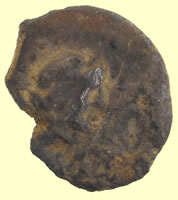 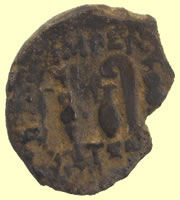 |
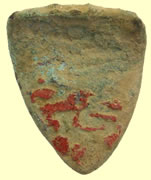 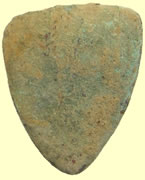 |
|||||||||
BC Roman republican silver coin sent for ID You have been finding all sorts of historically important material, lately! Julius Caesar the other day and today, it's Lucius Cornelius Sulla. If you recall any of your Roman History, Sulla's name should be nearly as familiar as Caesar's - or at least as familiar as Gaius Marius'. He was one of the "pioneers" foreshadowing the final end of the Republic and the rise of Imperium in its place.
This coin was issued while he was still in the East, fighting Mithradates VI "The Great" all over Asia minor, and finally defeating him. He refers to himself as "Imperator" (for the 2nd time, no less) with no mention of Senatorial authorization of his de-facto dictatorship and his therefore independent actions as an autonomous power with "his own" army.
This piece is cataloged as RSC/Babelon Cornelia 29 (or 30, the very minor difference in inscription is off-flan here so it doesn't really matter). This dates to 84-3 BC. It's very interesting that this Eastern military issue should turn up in Britain - this seems to be about the farthest afield we've been able to determine an origin for Roman material found in your area.
L. Cornelius Sulla, 84-83 BC
Obv: Diademed head of Venus right; Cupid holding palm-branch before; L • SVLLA below.
Rx: Jug & Lituus between two trophies; IMPER above, ITERVM (or ITERV) below
RSC Cornelia 29-30, RRC 359/2, CRR 761 SR 276.
Mark
|
Medieval heraldic enameled shield pendant |
|||||||||
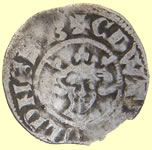 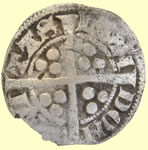 |
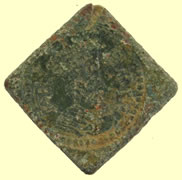 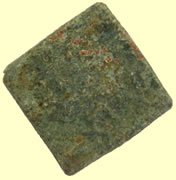 |
|||||||||
1341 Edward III hammered silver florin penny Obv EDWAR * ANGL DNS HYB Rev CIVI/TAS/LON/DON - London mint |
1603-1625 James 1st coin weight |
|||||||||
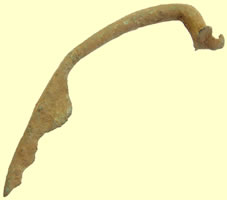  |
 |
|||||||||
Huge thin 2nd Roman fibular brooch |
Excellent find showing 17thC spur and fittings attached |
|||||||||
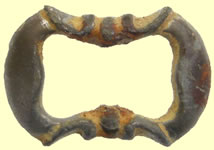 |
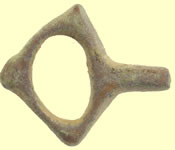 |
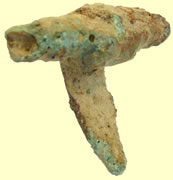 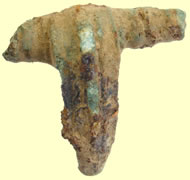 |
||||||||
1550-1650 buckle |
c10thC Saxon harness cheek piece |
2ndC Roman fibular brooch |
||||||||
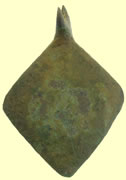 |
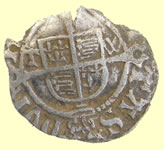 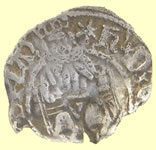 |
|||||||||
Medieval harness pendant |
1526-44 Henry VIII hammered silver sovereign penny - (Duram) TW by shield Bishop Thomas Wolsey
|
|||||||||
  |
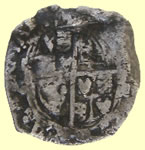 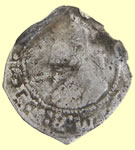 |
|||||||||
1673 Charles II milled copper farthing |
1634 Charles 1st hammered silver penny |
|||||||||
 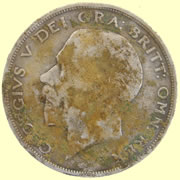 |
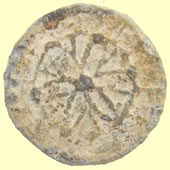 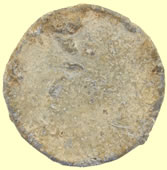 |
|||||||||
1921 George V milled silver half crown - 30 pence |
17thC lead token |
|||||||||
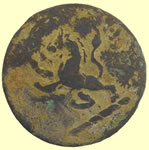 |
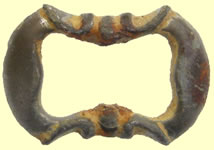 |
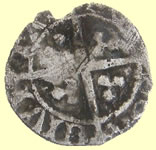 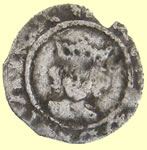 |
||||||||
19thC Livery button |
1550-1650 buckle |
Extremely rare 1483-85 Richard III hammered silver halfpenny Obv RICARD DI GRA REX Rev CIVI/TAS/LON/DON I.m. Halved sun and Rose |
||||||||
 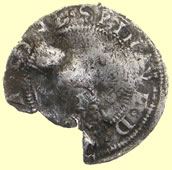 |
 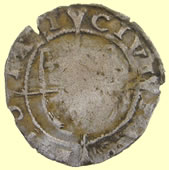 |
|||||||||
1571 Elizabeth 1st hammmered silver half groat |
1544-7 Henry VIII hammered silver half groat - 3rd coinage Rev CIVI/TAS/EBO/RACI - York mint |
|||||||||
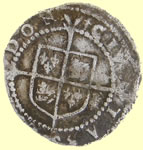 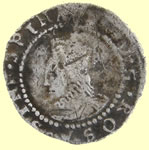 |
 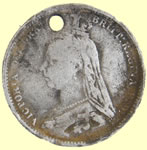 |
|||||||||
1580-1 Elizabeth 1st hammmered silver penny |
1888 Victorian milled silver sixpence |
|||||||||
|
  |
|||||||||
Roman BC Republican silver coin - sent for ID and in the 'cooker' OK, that's much better!
This is C. Vibius C. f. C. n Pansa. This is very late in the "Republican" era, it's actually well into the beginning of the Imperatorial era. This dates to about 48 BC, so is after the beginning of Caesar's final career in Rome.
The obverse has PANSA below a "mask of bearded Pan" - this looks more like a head of Pan to me, but that's what the book says.
The reverse shows Jupiter Axurus seated left holding a patera and a cruciform scepter. The entire inscription is C • VIBIVS • C • F • C • N / IOVIS • AXVR
Catalog references are RSC/Babelon Vibia 18, SR 420.
Mark
|
1215 Henry III hammered silver cut half penny Rev **SAMVEL* - Moneyer Samvel of Canterbury mint |
|||||||||
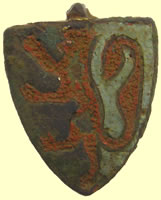  |
||||||||||
14thC Heraldic medieval shield pendant - rampant Lion with enameled inlay - researching the family Ok, as of yet, I only find one shield with the red rampant lion, and the background with split colors. Now, since we see a bit of gold on the back and on the top, I think it is safe to assume that the left side of this shield was gold. Cal Jim |
||||||||||
10-40 AD Northern silver of Cunobelin - AR unit Hobb 1868 Obv 'CVNO' inside double rectangle, all inside wreath pellet boarder Rev winged griffin r.,below 'CAMV' inside quad.o,pellet boarder |
||||||||||
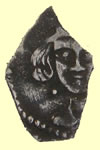  |
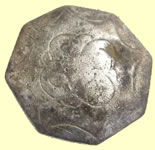 |
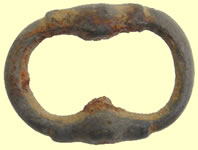 |
||||||||
1461 Edward IV Irish hammered silver penny |
18thC silver button |
1650- 1700 buckle |
||||||||
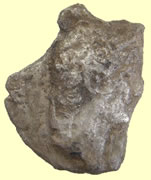 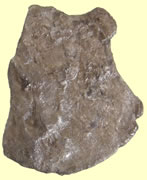 |
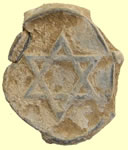 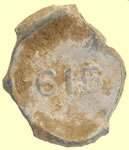 |
|||||||||
Rough cooked silver Roman coin fragment |
Post medieval lead bale seal |
|||||||||
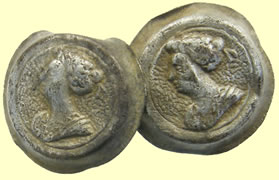 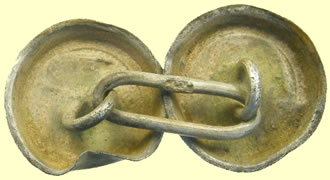 |
||||||||||
Stunnning 1704 Queen Anne commemorative silver cufflinks - reported as treasure to museum |
||||||||||
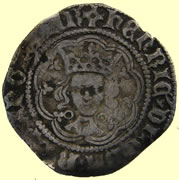 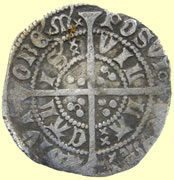 |
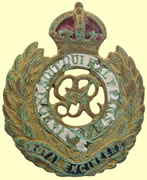 |
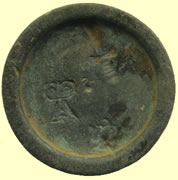 |
||||||||
May/July 1422-1430 Henry VI hammered silver half groat - annulet Issue Calais IM Cross 1 Obv HENRIC DI REX ANGL Z FR Rev VIL/LA/CAL/IS |
Royal Engineers badge |
1704 Anne tarde weight - Crown A cipher |
||||||||
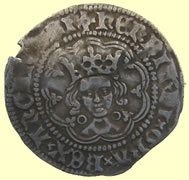 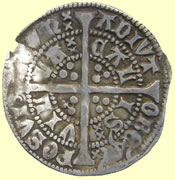 |
 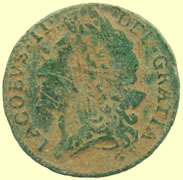 |
|||||||||
May/July 1422-1430 Henry VI hammered silver half groat - annulet Issue Calais IM Cross 1 Obv HENRIC DI REX ANGL Z FR Rev VIL/LA/CAL/IS |
1689 James 1st Irish emergency issue gun metal coinage |
|||||||||
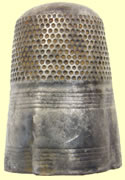 |
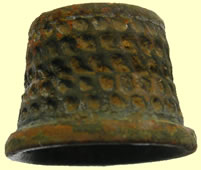 |
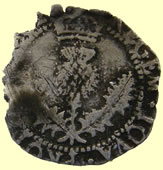 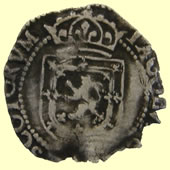 |
||||||||
18thC silver thimble |
15thC open topped thimble |
1601 James VI of Scotland hammered silver 1/4 Thistle Crown Merk |
||||||||
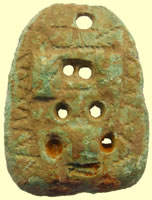 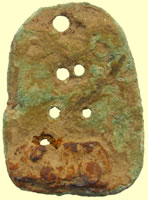  |
||||||||||
Very unuusal thick cast decorated c10thC Saxon stirrup mount |
||||||||||
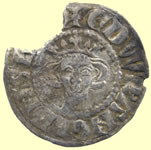 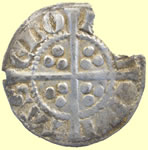 |
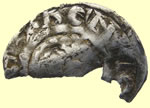 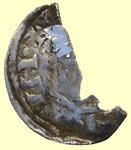 |
|||||||||
1341 Edward III hammered silver penny Obv EDWAR ANGLE DNS HYB Rev CIVI/TAS/EBO/RACI - York mint |
1215 Henry III hammered silver penny |
|||||||||
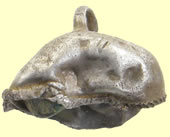 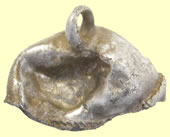 |
 |
|||||||||
Medieval silver hawking bell - reported as treasure |
1603 James 1st trade weight - Crown I cipher |
|||||||||
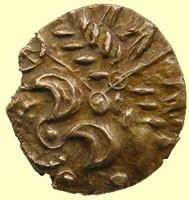 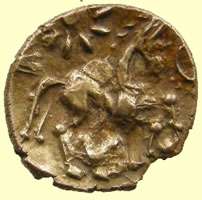 |
||||||||||
Early 70BC uninscribed 'Q' Gold - 'Remi 'Type Celtic gold qtr stater 1.35g, 12.24mm |
||||||||||
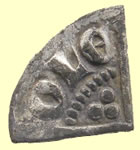  |
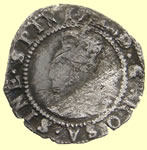 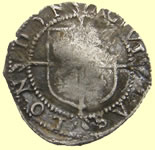 |
|||||||||
1247 Henry III hammered silver voided longcross cut 1/4 penny Moneyer Nicole |
1582-4 Elizabeth 1st hammered silver penny |
|||||||||
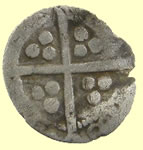 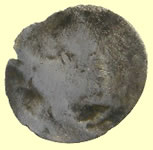 |
  |
|||||||||
Medieval hammered silver penny |
1817 George III millled silver sixpence |
|||||||||
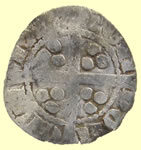 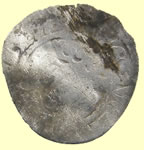 |
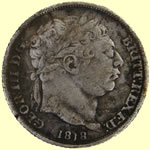 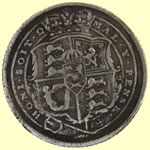 |
|||||||||
1279 Edward 1st hammered silver penny Rev CIVI/TAS/LON/DON - London mint |
1818 George III millled silver sixpence |
|||||||||
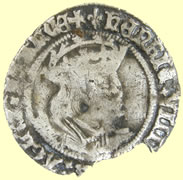 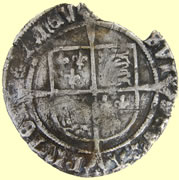 |
 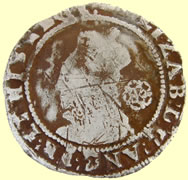 |
|||||||||
1493-5 Henry VII hammered silver groat - Lis mintmark - |
1589 Elizabeth 1st hammered silver sixpence |
|||||||||
 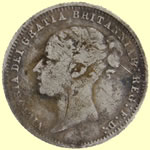 |
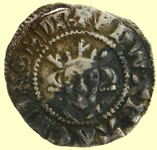 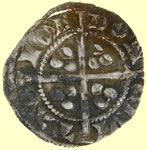 |
|||||||||
1875 Victoria milled silver sixpence |
1341 Edward III hammered silver penny florin penny Obv EDWAR ANGL DNS HYB Rev CIVI/TAS/LON/DON - London mint |
|||||||||
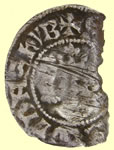 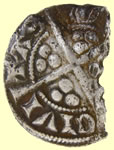 |
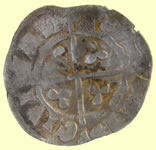 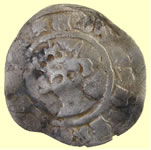 |
|||||||||
1341 Edward III hammered silver penny florin penny Obv E**** ANGL DNS HYB Rev CIVI/TAS/ |
1341 Edward III hammered silver florin penny Obv EDWARDVS REX *** Rev CIVI/TAS/LON/DON - London mint |
|||||||||
 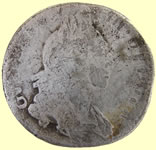 |
 |
|||||||||
1697 William III milled silver sixpence |
18thC toy cannon |
|||||||||
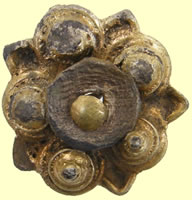 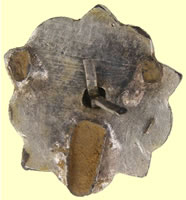 |
||||||||||
16thC Tudor fastener - gilded silver - reported to museum as treasure |
||||||||||
|
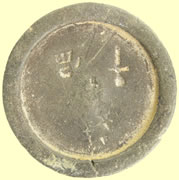 |
|||||||||
2nd C Roman gilded snake headed braclet |
1630 Charles 1st trade weight - Crown C cipher |
|||||||||
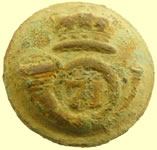 |
 |
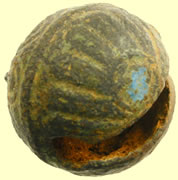 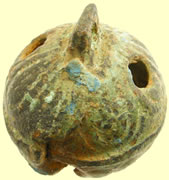 |
||||||||
|
19thC hunting button |
17thC enameled crotal bell |
||||||||
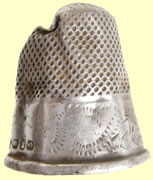 |
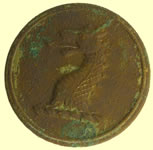 |
 |
 |
|||||||
19thC silver thimble - Birmingham mint |
19thC livery button |
15thC casket key |
Royal Horse Artillery Generic Issue
|
|||||||
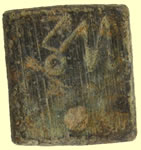  |
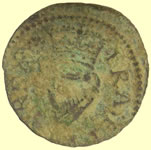 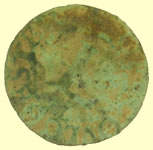 |
|||||||||
18thC apothecary weight |
1603 James 1st hammered copper farthing |
|||||||||
 |
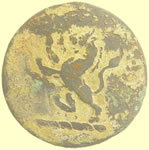 |
 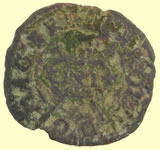 |
||||||||
Georgian watch winder
|
19thC livery button |
1634 Charles 1st hammered copper rose farthing |
||||||||
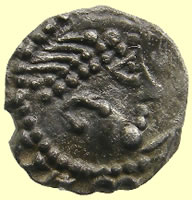 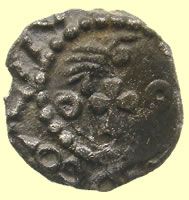 |
||||||||||
Saxon C600-775 AD Silver Sceat - sent to Fitzwilliam museum for recording and ID 1.19g, 12.11mm Many thanks for this new find (EMC 2011.0076), which is Series BII Dr Martin
|
||||||||||
1983 - London hallmark 9 carat diamond and emerald ring - 1.26g, 19.31mm |
||||||||||
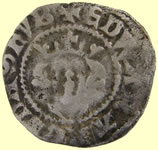 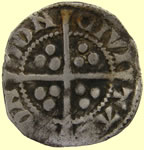 |
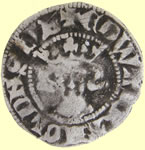 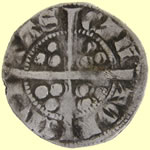 |
|||||||||
1341 Edward III hammered silver penny florin penny Obv EDWAR ANGL DNS HYB Rev CIVI/TAS/LON/DON - London mint |
1341 Edward III hammered silver penny florin penny Obv EDWAR R ANGL DNS HYB Rev CIVI/TAS/CAN/TOR - Canterbury mint |
|||||||||
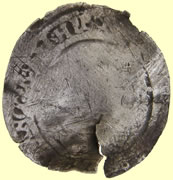 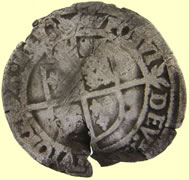 |
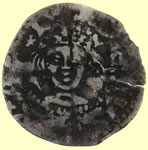 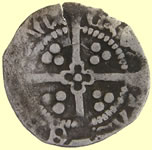 |
|||||||||
1560 Elizabeth 1st hammered silver sixpence |
1413-22 Henry V hammered silver penny - mullet to left of crown Quatrefoil with pellet reverse cross Rev CIVI/TAS/EBO/RACI - York mint |
|||||||||
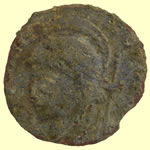 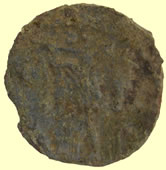 |
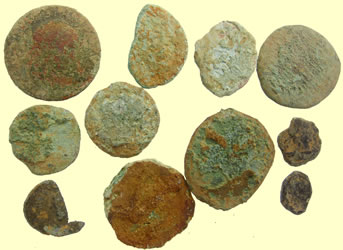 |
|||||||||
Mid 4thC House of Constantine Roman bronze coin |
Lots of Roman 'grots' being dug |
|||||||||
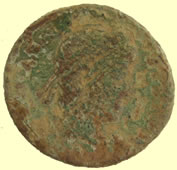 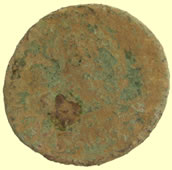 |
 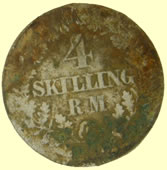 |
|||||||||
Mid 4thC House of Constantine Roman bronze coin |
1826 Federick VII of Denmark milled silver 4 skilling |
|||||||||
 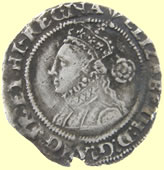 |
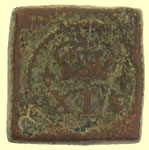 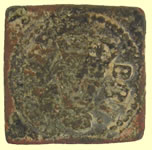 |
|||||||||
1565 Elizabeth 1st hammered silver half groat |
James 1st Double crown, 2nd coinage revalued coinweight XIs |
|||||||||
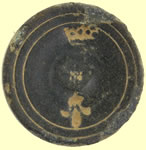 |
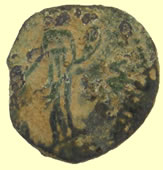 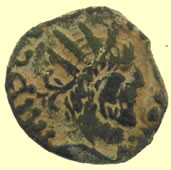 |
|||||||||
1421 Fleur de lis and crown (incuse) Uniface coin weight |
Mid 4th Barbarous radiate Roman coin sent for ID This piece appears to be a contemporary copy using a Tetricus I (or possibly Victorinus) billon antoninianus as its prototype. I'm not 100% certain what personification was intended on the reverse, although both Moneta, holding scales and cornucopiae and Hilaritas, holding palm-branch and cornucopiae, are both possibilities. There are a few other personifications, Laetitia, Providentia & Uberitas among the most common, who appear with some regularity in the Gallic Imperial series and would also be holding cornucopiae, so since whatever this lady holds in her right hand is off-flan, we'll have to settle for a generic description like, "Female Personification standing left holding [?] and cornucopiae"
Since the legends are not completely illiterate and the art work is really pretty good for these, my guess is that it would be just about contemporary with the prototypes - ie: 270's AD - and very unlikely to be much later than the 280's, since London and the as yet uncertain "C" mint produced large quantities of coin for Carausius beginning in 287. London switched to production of Imperial types immediately after the successful campaigns of Constantius (I) in the 290's, so the vacuum of regal coin which these pieces addressed generally began around 275 and had been relieved first by Carausius (and Allectus) then Constantius by the late 280's and into the early 290's.
Mark
|
|||||||||
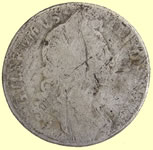 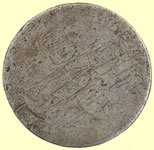 |
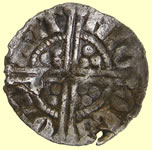 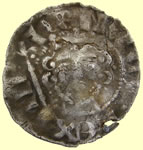 |
|||||||||
1696 William III milled silver sixpence |
1247 Henry III hammered silver voided long cross penny - Class 5b Obv HENRICVS REX Rev NIC/OLE/ONC/ANT Moneyer Nicole of Canterbury mint |
|||||||||
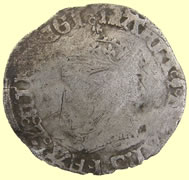 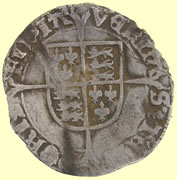 |
  |
|||||||||
1554 Mary hammered silver groat |
1247 Henry III hammered silver voided cut half long cross penny Class IIb-IIIc Obv HENRICVS REX Rev ** NO/RWI- Norwich mint |
|||||||||
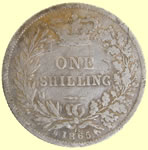 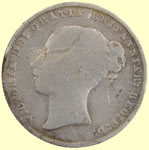 |
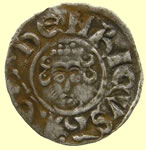 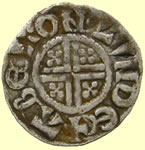 |
|||||||||
1865 Victoria milled silver shilling |
1216 Henry III hammered silver penny Class 6b2 Obv HENRICVS REX Rev ABEL ON LVND - Moneyer Abel of London mint |
|||||||||

